Science Discovery Exploring, Describing, & Explaining the Natural World

Welcome to the
BI 102 Resource Pages
This course has 30 resource pages, which are basically free online readings. Material on these resource pages complements the lectures and labs and the content can (and will) be on the quizzes and final exam.
You can use the course schedule or resource index to navigate to each resource. You have two resource pages for each day of class.
The first resource below is Science Discovery, the other resource for today is Perception.
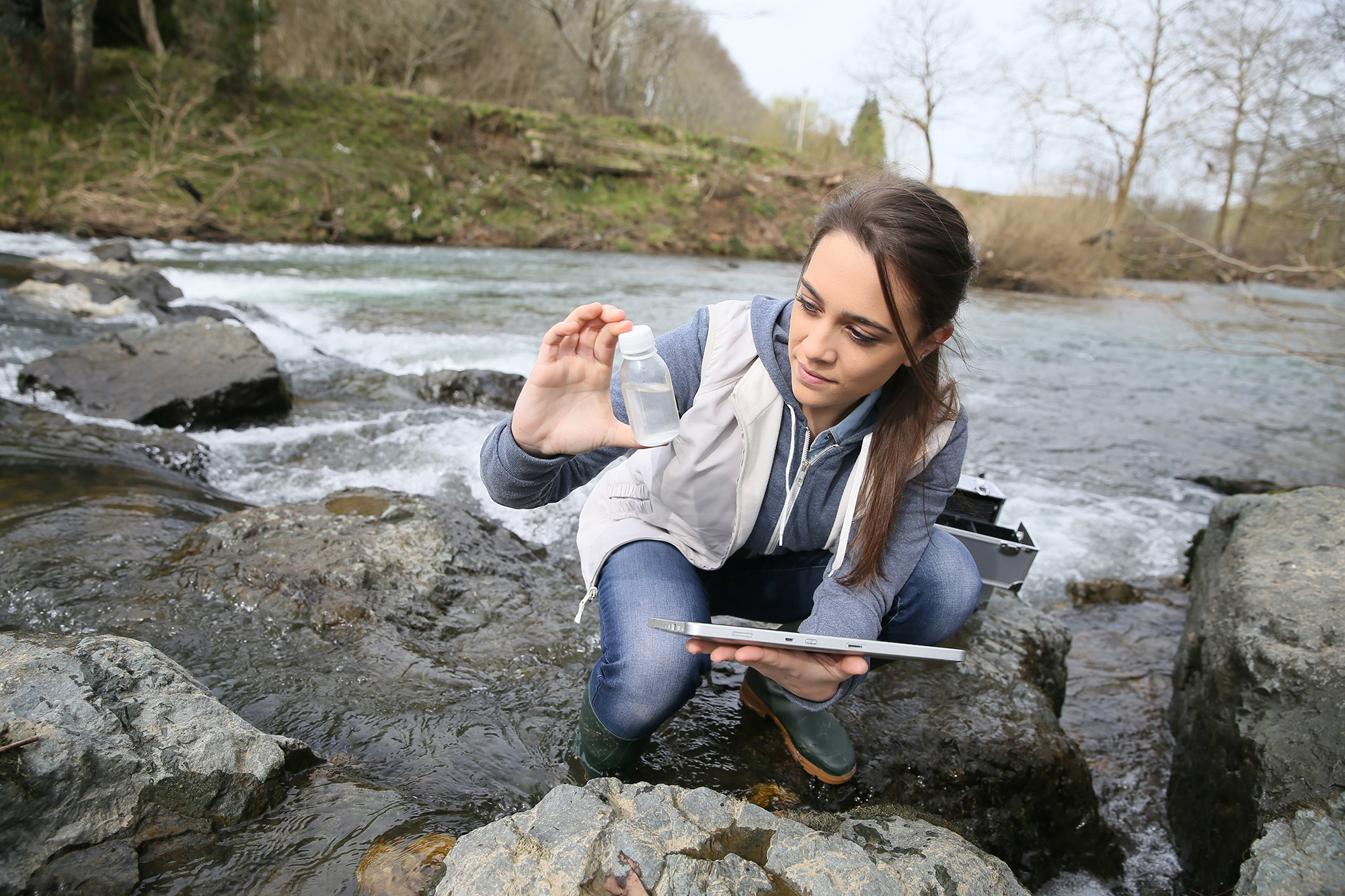
Science Discovery Outcomes
-
Describe three characteristics shared by science fields that distinguish them from other fields of study.
-
Define the three components of science discovery: exploration, description, and explanation
-
Provide a real-world example of the science discovery process in action.
Science is one way of knowing about the world.
Play this video for a brief overview.
What is Science?
Take a moment and think of the names of three different science fields.
Hint: you may have taken a few of these courses in high school.
What did you come up with? Common responses include: physics, chemistry, geology, and of course what we are here for: biology. Less common, but also correct responses include: mathematics, logic, social sciences, environmental sciences, and more.
Some of the sciences are shown here in roughly chronological order from logic and mathematics through a few of the newest fields that integrate multiple disciplines.
Why are these sciences and not something else?
Science involves a specific process to gather knowledge about observable phenomena.
Let\’s dissect this.
\”Science involves a specific process…\” This is science discovery, more on this in a moment.
\”…to gather knowledge…\” Science knowledge includes facts, laws, and theories. More on this in upcoming sections on Mendel and Darwin.
\”…about observable natural phenomena.\” We have to see it, smell it, touch it, or somehow observe something in nature directly or indirectly. More on this in the next section on perception.
The process of science discovery includes exploration, description, and explanation.
Let\’s see science discovery in action with a trip to the Pacific Coast.
We (Mark & Lesley) live in Corvallis, Oregon. If we take highway 20 due west for 50 miles (about an hour) it ends in Newport, directly on the coast.
Nye Beach is a popular destination in Newport, Oregon
This is a habitat that many people just walk past instead of exploring.
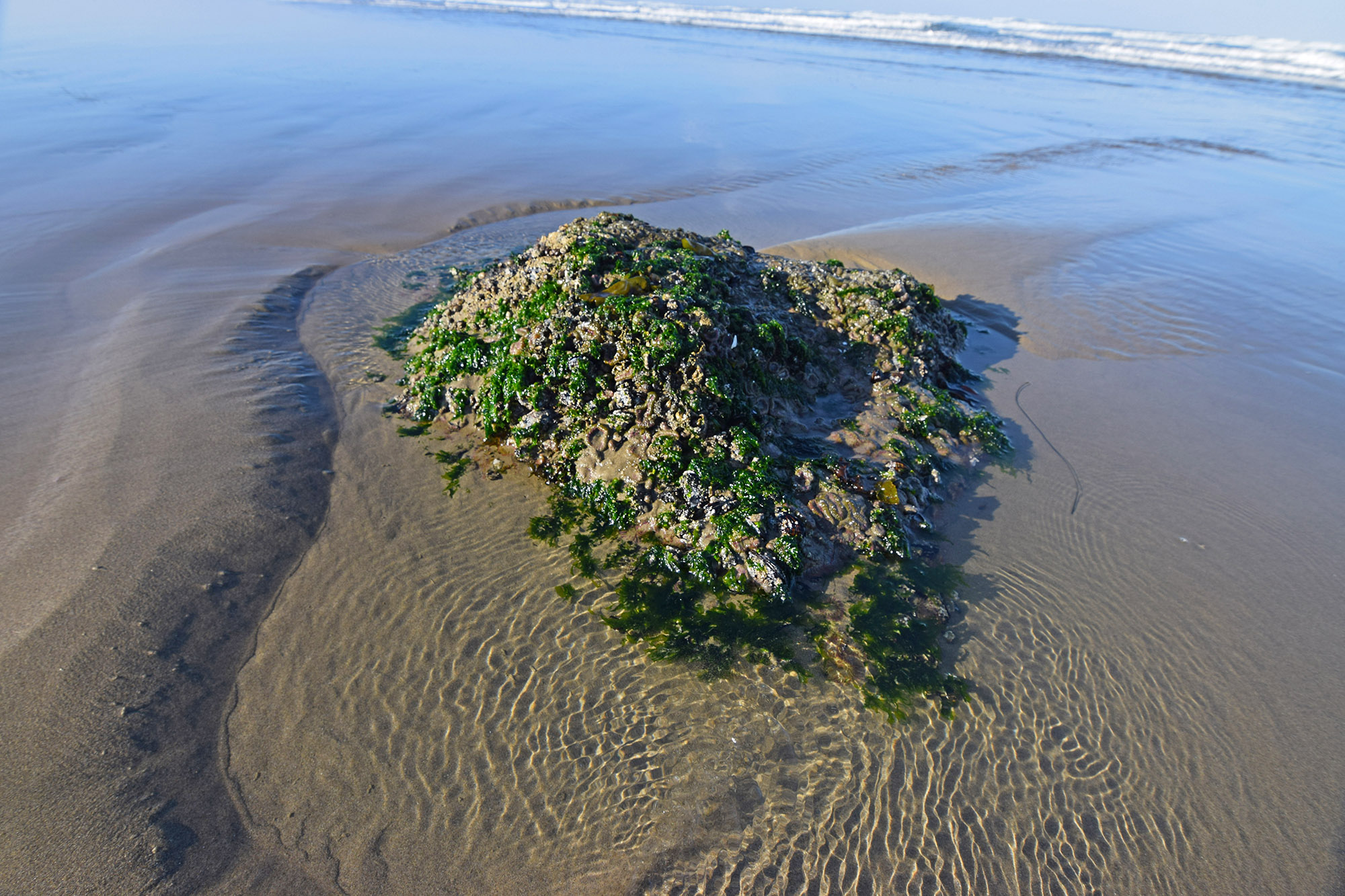
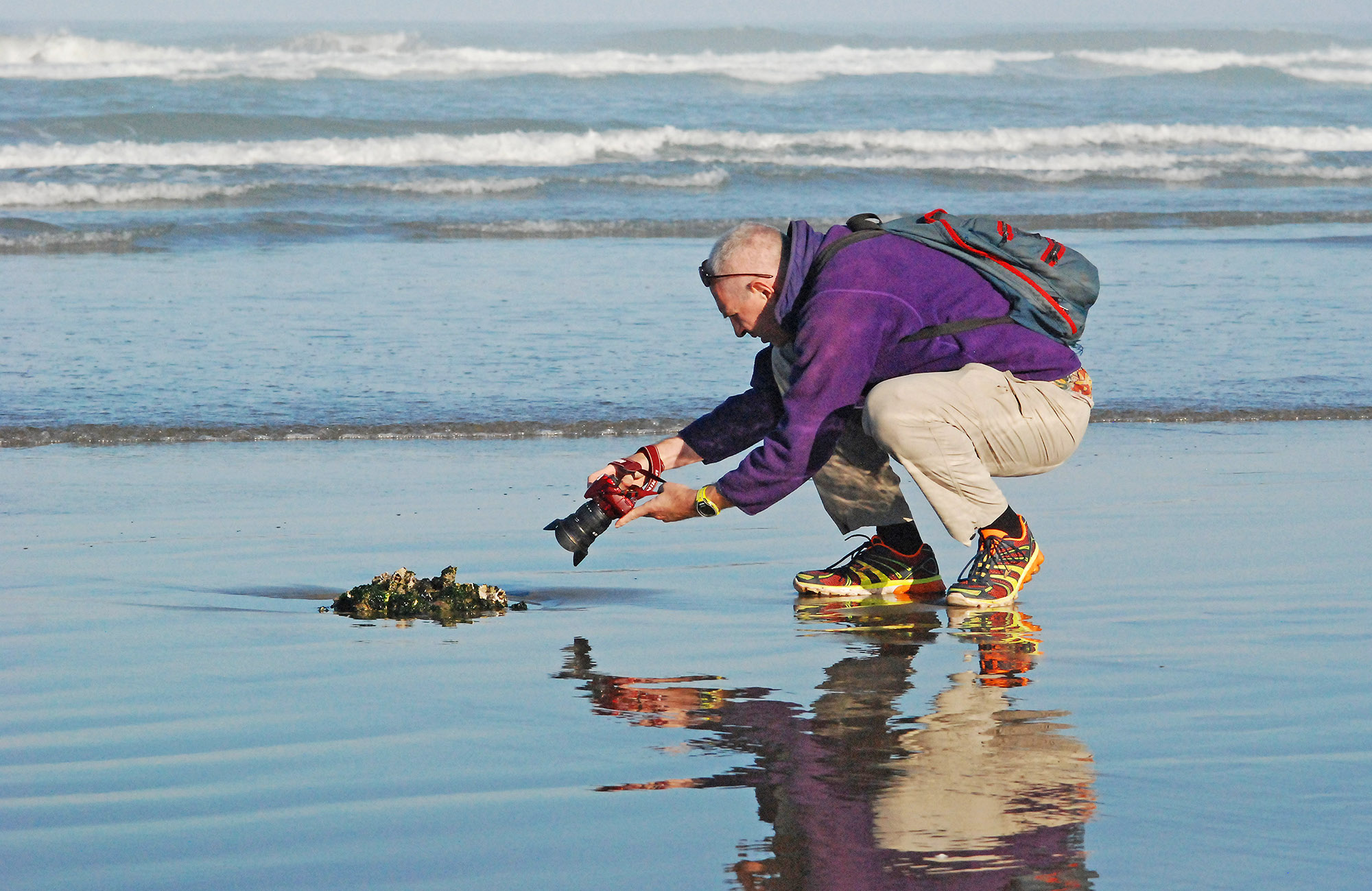
This gives you an idea of scale, Mark is taking a photo.
Exploration is investigating new phenomena, in this case, organisms on a micro (small) habitat, a rock that is exposed at low tide.
On the rock are numerous organisms. The next step is to describe what is observed.
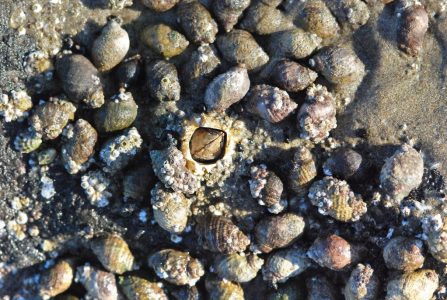
Barnacles
Some of the organisms are barnacles. They are small (less than one inch diameter) cone-shaped mineral structures with animals inside.
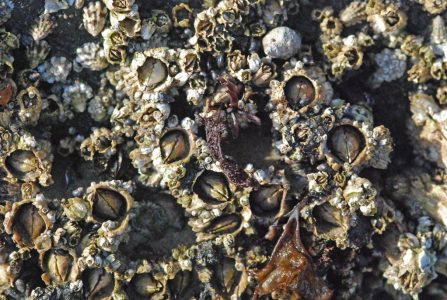
Different Species
The different shapes of the mineral cones, the different sizes, and groupings suggest there may be two of more different species on this rock.
The next step is to explain what you are describing.
There is a lot to explain. For example:
-
How do the two species of barnacles co-exist on the same rock?
-
How do they survive the pounding waves? What are their predators? What are they eating?
-
Where did the barnacles come from, not just these individual organisms, but also the species themselves?
Explanation may take more detailed exploration and description, for example viewing the barnacles underwater. Experimentation may be necessary to determine whether explanations accurately predict what is occurring in nature.
In this course you will explore, describe, and explain the natural world.
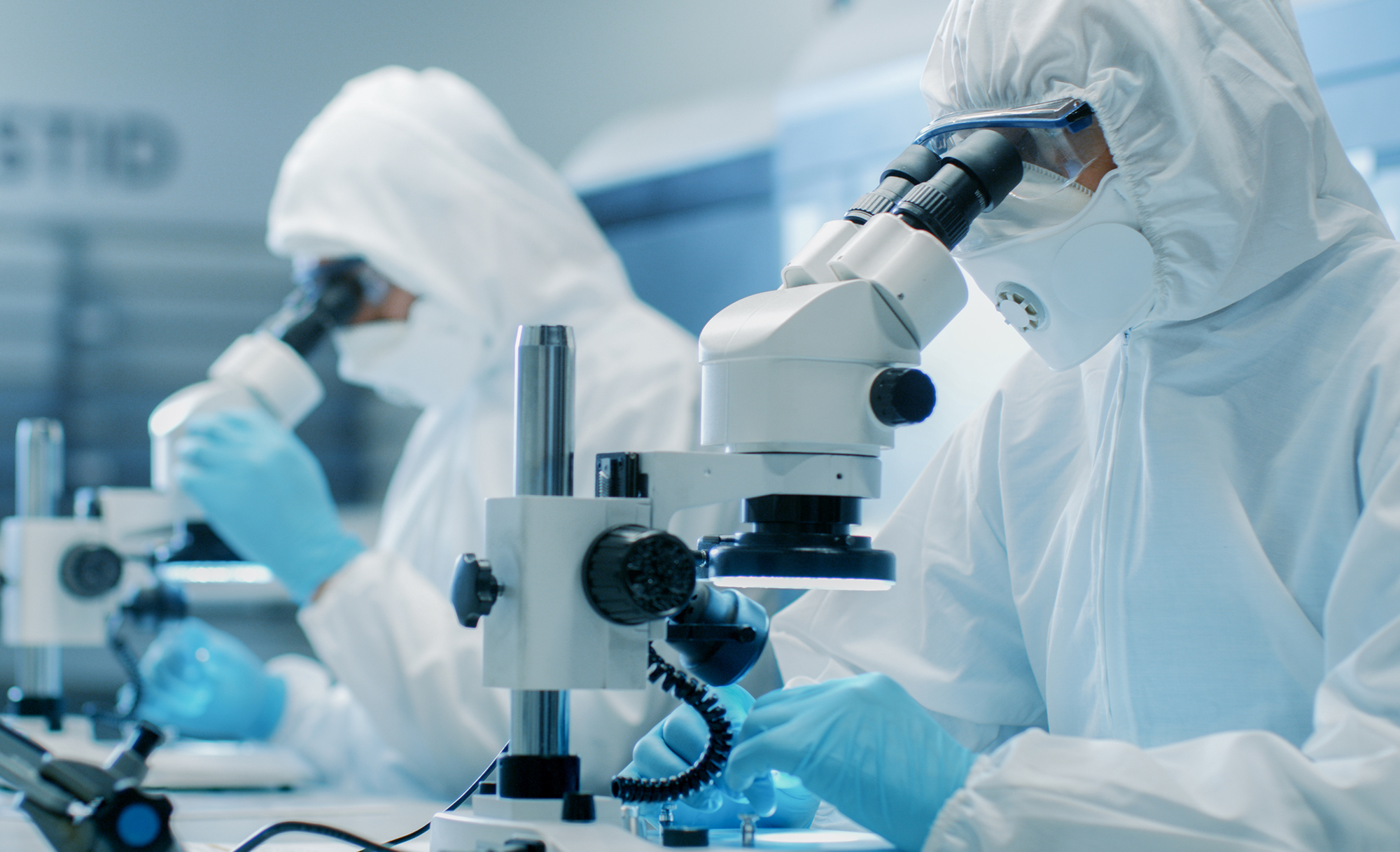
Check your knowledge. Can you:
-
Describe three characteristics shared by science fields that distinguish them from other fields of study?
-
Define the three components of discovery: exploration, description, and explanation?
-
Provide a real-world example of the science discovery process in action?